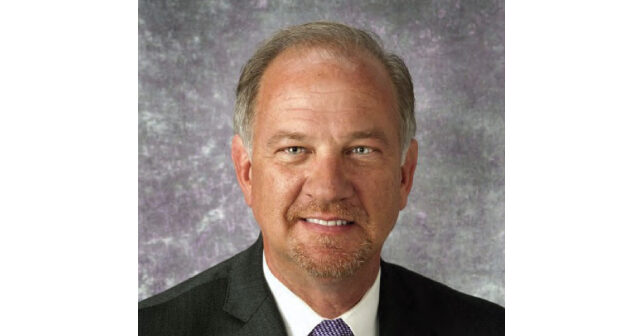
Dr. Yealy became the new editor-in-chief of Annals of Emergency Medicine in 2022.
Explore This Issue
ACEP Now: Vol 42 – No 01 – January 2023Why is Annals of Emergency Medicine the best journal in emergency medicine?
Dr. Yealy: For 50 years, Annals has recruited the best talent to evaluate submissions and created the best processes to make that happen. When you put those [processes] together, you have a recipe for both impact and recognition.
Tell me a little bit about your journey to how you got into this position.
Dr. Yealy: I finished my training in 1989, and I did a research fellowship as part of that training. Back then when I did a research fellowship, there were two other research fellows in emergency medicine in the country. We could have come to this meeting [ACEP22] and met in almost any room or any corner; it was easy to know everybody in it. And that’s a symbol of how far we’ve come, because now you wouldn’t be able to have that in the single room. I got interested in the creation of knowledge and once you have some skill toward creating knowledge and writing the manuscripts around it, you quickly get invited to review that same process for others. I started reviewing for both Annals and other journals, and over time developed an aptitude and skill for it. [I] took on increasing roles at both Annals and at other journals, and over the past 16 years have been deputy editor [for Annals].
What’s the deal with reviewer number two?
Dr. Yealy: How is it that we manage to find the most difficult person and always assign them two? Just like on K-type questions, the right answer is always B. I think that it’s actually not true. Your expectation is such that when it happens, it reinforces what is otherwise a haphazard event. It’s not random, but it’s haphazard.
How does Annals fit in with JACEP Open, ACEP Now, and all the other publications that the College publishes?
Dr. Yealy: The College has, as part of its mission and goals, the desire to meet the educational and practice needs of anyone who’s a member. And they can do that through a variety of different formats. That includes peer-reviewed, original scientific research. That includes other platforms where work that maybe has already been through peer review or hasn’t quite made it to peer review yet can be shared. I think for ACEP, it’s a wise strategy to have multiple different platforms that overlap and yet provide information in the style and manner in which the end user likes to take it up. And that would include both print online and standard traditional formats. Each of those overlap because they’re sharing knowledge, and they share from each other. Annals and JACEP Open focus primarily, but not exclusively, on original work. Annals, perhaps more mature original work. And JACEP Open maybe more nascent work. ACEP [Now] would take the output from those things and talk more about, how can that be integrated into practice? I see them as distinctly different but overlapping platforms that are important for any successful organization to make sure they’re meeting the needs of all the members. [Annal’s] mission is to provide the highest quality science, whether it’s new or assimilation of old known science, in formats that are the more traditional formats.
Your predecessor Dr. Michael Callaham was in this role for about 20 years. Are you going to be in the role for 20 years?
Dr. Yealy: No. I think change is an excellent thing. And we are right now in the middle of one of the most tectonic changes in health care from any angle that you’re talking about. Delivery of health care, financing of health care, creation of knowledge around health care, and the education of folks. And so this is an exciting time to be at the helm of one of the vessels that’s a part of that fleet addressing all of those particular opportunities. I don’t plan to be in this for an extended period of time… It’s my job to make sure on day one that I am grooming a pool of successors for [myself].
What are your thoughts about pre-publication in the medical field?
Dr. Yealy: Well, it’s been a fascinating journey for the past couple of years. Like you, I had virtually no personal experience with pre-publication archives until COVID-19 came around. And people were [so] thirsty for insight at any level that a platform that offered rapid delivery on insight was really felt to be very helpful. And I do think that it will change many of the processes, and perhaps even some of the goals, of how it is we share scientific information. I think the experiences over the past two and a half years with the pandemic have taught us what’s really helpful about that. It’s a valuable tool to get information out, not only to practitioners but into the lay community, given the rapid pickup. But it’s also an opportunity to get misinformation out. The reason we do peer review, it’s not about true or untrue. Do the data make sense within the structure? Is the message interpreted with highest amount of fidelity? It’s not a matter of truth or not truth, but does it make sense? … It’s hard to unring a bell once there’s already been pickup at another level. I do think that the prepublication servers are changing things, but positively and negative[ly], I think we’re going to learn lessons about what works and what doesn’t work.
I wanted to ask about the Kardashian index. You’re familiar with that?
Dr. Yealy: It’d be very easy, given my age and my stated career, to have a snarky comment about the Kardashian index and say that’s just not real. But as we talked about in the beginning … the name of the game is to share information with the people in whom it either can influence their practice or influence their outcomes. So you’re talking about on the provider or the patient side, social media clearly is a powerful tool. Is it exactly the same as creating that knowledge or sending it off and going through peer review? No, it’s a different part of the process. I think having singular concise measurements of how someone is effective at that particular job makes sense to me. The challenge for a person who has a scholarly career is, how will that fit when they want advancement or further recognition, or if they even want to monetize that?
On the advancement side, I see more and more people who, in addition to saying I’ve written so many papers that were cited by so many other people, or supported by so many dollars, are also talking about some form of measurement. And the Kardashian index is just one. There’s Altametric measures. It’s becoming more and more important, people are trying to quantify either the impact of a piece of information or their skill at delivering on that promise. I suspect it will be one measure, whether [the Kardashian Index] becomes the measure or not, I can’t really tell yet.
In your tenure thus far with the Annals, what do you feel is the most important paper that has been published, let’s say in the past 16 years?
Dr. Yealy: Oh, boy, that’s a tough question. I wasn’t prepared to answer that right now. I can think of many that were helpful, but I’d honestly have to sit down and put a little bit more thought into that.
What do you think’s been the most memorable thing that comes to your mind?
Dr. Yealy: A piece about the practice of emergency medicine allowed us to not only develop dialogue back and forth on that particular topic, but to re-examine the role between the sponsoring organization and the editorial board and the content of the journal. And I’m proud of that, because a lot of other high-profile journals went through that process because of much more conflict, and perhaps even a need to terminate individuals involved. We were able to do it in a healthy way that reinforced and raised the level of, not only respect, but discourse between the two bodies that each had a task to do. I thought that was really, really healthy, although it was a little bit bumpy at times.
Any final thoughts?
Dr. Yealy: [I want to point out] that not only did Dr. Callaham raise the stature, the content, and the recognition of the Annals of Emergency Medicine, he changed publishing around the globe. He saw that when humans evaluate humans, and that’s what happens during a peer review, one person looks at another person’s work and makes comments about it. No matter how hard you try, there will be opportunities to do better. In other words, either failures to accept something that’s important, or having accepted something that shouldn’t have been… But [Dr. Callaham] created science and observations around that and shared them across all journals. Annals of Emergency Medicine is not only the leading journal in emergency medicine for creating content specific to acute illness and injury, but it’s a leader in changing the insights and the practices behind peer review. I can’t think of another journal that has that type of impact on broader publications.
 Dr. Dark (@RealCedricDark) is associate professor of emergency medicine at Baylor College of Medicine and the medical editor in chief of ACEP Now.
Dr. Dark (@RealCedricDark) is associate professor of emergency medicine at Baylor College of Medicine and the medical editor in chief of ACEP Now.
Pages: 1 2 3 4 | Multi-Page




No Responses to “Q&A with Annals of Emergency Medicine Medical Editor Dr. Donald Yealy”